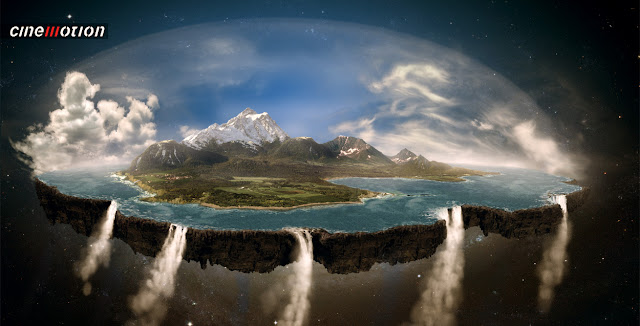

It is difficult for us to fully understand what this meant as today we think about matter in very different terms. In the tradition of Plato and Empedocles before him, Aristotle argued that there were four fundamental elements, fire, air, water and earth. They held a range of beliefs about nature and the world but they were, in many cases, working to ground those beliefs in an empirical exploration of what they could reason from evidence. The Greeks were applying mathematics to theorize about the nature of their world. The measurement however was relatively close to the actual size of the Earth. There is some dispute on the accuracy of his calculations as we don't know exactly how long the units of measure were.

He used a different approach, measuring the shadows cast in Alexandria and Syene to calculate their angle relative to the Sun. When the Earth is in-between the sun and the moon it causes a lunar eclipse and measuring the size of the Earth's shadow on the moon provided part of the information he needed to calculate its size.Įratosthenes estimated Earth's circumference around 240 B.C. The large circle is the sun, the medium circle is the Earth and the smallest circle is the moon. The diagram at the right illustrates a translation of his work. In 3rd Century B.C., Aristarchus of Samos reasoned he could figure out the size of the Earth based on information available during a lunar eclipse. Lunar eclipses also allowed for another key understanding about our home here on Earth. If the Earth were flat, it would be expected that you would be able to see the entire ship as soon as it became visible. As the image suggests this is exactly what one would expect on a spherical Earth. A wide range of astronomy texts over time use this as a way to illustrate the roundness of the Earth. When a ship appears on the horizon it's the top of the ship that is visible first. Given that opportunities for observations of a lunar eclipse do not come along that often, there was also evidence of the roundness of the earth in the experiences of sailors. This would suggest that the Earth is a sphere. As the shadow moves across the moon it is clearly round. During a lunar eclipse, when the Earth is between the sun and the moon, they identified the shadow of the Earth on the moon. In the 5th century B.C., Empedocles and Anaxagoras offered arguments for the spherical nature of the Earth. This is a critical point, as there is a widespread misconception that ancient peoples thought the Earth was flat. The Sphere of the Worldīy the 5th century B.C., it was widely accepted that the Earth is a sphere. This section offers a tour of some of the astronomical ideas and models from ancient Greece as illustrated in items from the Library of Congress collections. Babylonian and Egyptian astronomers developed systems that became the basis for Greek astronomy, while societies in the Americas, China and India developed their own.Īncient Greek astronomers' work is richly documented in the collections of the Library of Congress largely because of the way the Greek tradition of inquiry was continued by the work of Islamic astronomers and then into early modern European astronomy. Throughout history civilizations have developed unique systems for ordering and understanding the heavens. As the stars move across the sky each night people of the world have looked up and wondered about their place in the universe.


 0 kommentar(er)
0 kommentar(er)
